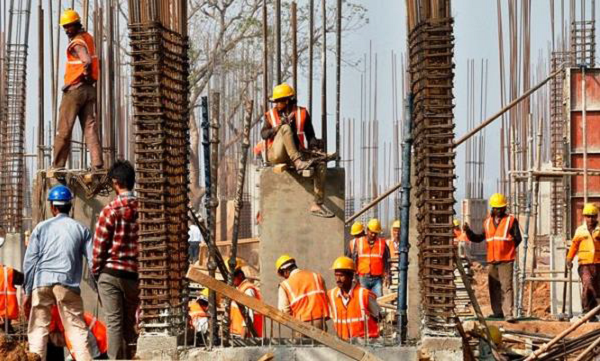Introduction
- The motive behind working is not only to earn for ourselves, but also to support our dependents.

- Being employed gives a sense of self-worthiness and dignity as well as recognition in the society.
- Above all, a working employee not only earns for himself/herself, but he/she also contributes to the national income of the country.
Features of Employment
- A study on the employment types and the living style of people gives an information on the following areas −
- National income
- Employment structure
- Management of human resources, etc.
- The study helps us analyse the different levels of employment and the levels of income generated by different sectors that contributes to the national income.
- On the basis of employment study, we can address the persistent social issues such as poverty, child labour, exploitation, etc
- When we calculate all the goods and services produced in a year, it is known as Gross Domestic Product (GDP).
- When we add all the earning of exports and deduct the amount paid for import, the final number is known as Gross National Product (GNP).
- If the export is greater than the import, then the GNP’s measurement is on positive side and if the export is lesser than the import, then it is on negative side.
Seasonal Unemployment
- Employment in India is multifaceted. There are people who are permanently unemployed; and there are people who are temporarily employed or temporarily unemployed (known as seasonal unemployment/employment).
- On the other hand, a task that requires only 5 workers to handle it, is being handled by 12 workers. This condition is known as disguised unemployment.
- Among all the workers of the country −
- 70 percent of the workforce are men.
- Three-fourth of the workforce is from rural areas.
- Women workers account to one-fifth of the total workforce (in urban areas).
- Population refers to a group of people living in a given area in a given time period.
- As per the 2009-10 data, about 39 persons of every 100 persons, are employed.
- In urban areas, the number of employed people is 36 per 100 persons, whereas, it is about 40 per 100 persons in rural areas.
- People in the urban areas are more literate, and they have more options to look out for a permanent job. This could mainly be the reason for this gap.
- The number of female workers in rural areas (25/100 women) is more than in urban (15/100 women) areas.
- The income of the male counterpart in the urban areas is high. Hence, the need for a female member of a family to go and earn does not arise,
- The disparity between self-employed workers and salaried workers is also high.
- In India, there are more number of men as salaried workers than women.
Types of Service Sector
Service sector is categorised into the following −
- Primary sector − It includes agriculture and other related works.
- Secondary sector − It includes mining and quarrying, manufacturing, construction, and electricity, gas, water supply, etc.
- Tertiary sectoror Services sector − It includes trade, transport and storage, and services.
Primary Sector
- Primary sector has the maximum percentage of work force, i.e., about 66% in rural area and 9% in urban area.

- In the primary sector, men account to about 43% and women account to about 62.8% of the workforce.
- The total percentage of workforce in the primary sector accounts to about 48.9%.
Secondary Sector
- Secondary sector has 16% of the workforce in rural areas and 31% of the workforce in urban areas.
- In secondary sector, women account to about 20% of the workforce and men account to about 25.9 percent of the workforce.

- The total percentage of workforce in secondary sector accounts to about 24.3%.
Tertiary Sector
- Tertiary or Service sector has 17.4% of the workforce in rural areas and about 60% of the workforce in urban areas.
- In tertiary sector, women account to about 17.2% of the workforce and men account to about 30.5% of the workforce.

- The total percentage of workforce in tertiary sector is about 26.8%.
Trend of Employments
- The pattern of employment has changed over the last four decades.
- The percentage of workforce in primary sector has decreased from 74.3% (in 1972—73) to 48.9% (in 2011—12).
- The percentage of workforce in secondary sector has increased from 10.9 (in 1972—73) to 24.3 (in 2011—12).
- The percentage of workforce in tertiary sector has increased from 14.8% (in 1972—73) to 26.8% (in 2011—12).
- Similarly, the percentage of self-employed workers has come down from 61.4% (in 1972—73) to 52% (in 2011—12).
- The percentage of regular salaried employees has gone up from 15.4% (in 1972—73) to 18% (in 2011—12).
- The percentage of casual labourers has gone up from 23.2% (in 1972—73) to 30% (in 2011—12).
- The workers working in a public sector or other enterprises who hire other workers to get the work done are known as formal workers.
- On the other hand, the workers working in a primary sector (farmers, agricultural labourers), owners of small enterprises, are self-employed and do not hire workers. They are known as informal workers.
- Formal workers account to only about 6% of the workforce in India, while the other 94% of the workforce are informal workers.
- In the formal sector, only 21% of the workers are women.
- On the other hand, in the informal sector, about 31% of the workers are women.
- Unemployment in India is of different types.
No comments:
Post a Comment